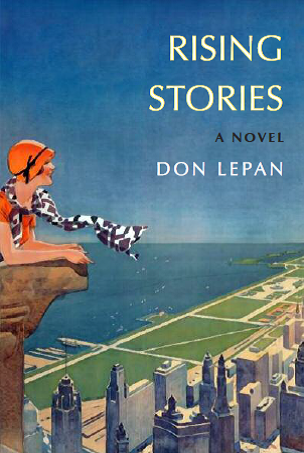Perhaps most disturbingly, sick or injured chicks, are seen being killed by a practice called "thumping"—where a bird is smashed against a hard surface to kill it. On several occasions the video shows birds that survived but are left in a garbage bag along with a pile of already dead chicks.The video did not merely expose the flouting of regulations at these two farms. Much more significantly, it gave viewers an understanding of how and why such abuse has become commonplace:
Industries such as the egg business have a Code of Practice that defines the care and handling of [birds], but the code is completely voluntary. Any oversight is conducted by the industry themselves. It is up to the Egg Farmers of Canada to perform the inspections, but as W5 learned, their primary focus appears to be the food safety of the eggs, or [issues of quota allocation], not whether the animals themselves are receiving adequate care.Most significantly of all, the program gave viewers a vivid sense of the levels of animal cruelty that, far from representing “abuses” of the system, are entirely approved practice under current Canadian law and current Canadian industry codes of practice. Packing hens together in battery cages where the birds are so cramped they can barely move became “conventional” industry practice around the world in the second half of the twentieth century. In many jurisdictions there has been a strong push-back against industry; in California a referendum has forced industry to give birds more room, and in Europe battery cages are being phased out entirely. Sadly, nothing of the sort is happening in Canada: the failure in this country to limit the spread of cruelty towards animals in “conventional” farming operations represents a massive (and massively under-reported) failure of democracy.
Now Mercy for Animals has done it again; as reported on CTV News June 9 2014 and on the national CBC News this morning, workers at the Chilliwack Cattle Company (milk from which is packaged under the popular “Dairyland” label) have been shown by a Mercy for Animals investigator to have been engaging on an ongoing basis in abusive behavior of the most sickening sort towards dairy cattle. And, as with the egg industry, there is good reason to believe that cruelty to farm animals is systemic.
Much of the problem is with the law; meaningful reform of Canada’s animal cruelty legislation (the essence of which dates from the 1890s) has been stalled again and again—perhaps most shamefully in 2003, when a bill that would have brought real improvement was passed by the House of Commons but allowed to die in the Senate. In 2008 the government passed very modest amendments to animal cruelty legislation, but these offered so little protection for non-human animals that they were vigorously opposed by the Canadian Federation of Humane Societies. Provincial governments (Conservative, Liberal, and New Democrat alike) have given the issue just as low a priority—and with both federal and provincial law so toothless, the judiciary has been powerless to make any meaningful contribution towards reducing cruelty towards animals in our agricultural industries.
What, then, of democracy’s fifth estate? Are the media making some efforts to raise awareness and bring about reform? And should they bear some responsibility to do so?
The broadcasting of the W5 feature and of the news features on CTV and CBC news might seem to suggest that the media is indeed trying to bring this issue to the attention of Canadians. But dig a little deeper, and the reporting of these investigations—in other media outlets as well as these—starts to reveal a different story.
To begin with, these investigations were not carried out by CTV or CBC, at the instigation of CTV or CBC, or under the auspices of CTV or CBC. They were entirely the initiative of the animal welfare organization Mercy for Animals. That W5 chose to air a feature on the work a Mercy for Animals investigator had done is to its credit (as is the follow-up work W5 did, such as uncovering a directive sent by the Egg Farmers of Canada association to its members: “do not allow [the media] access to your farms or barns”). And it is to the credit of CTV and CBC News to air reports on the most recently uncovered abuses in the dairy industry. But neither W5 nor the networks can in any way be credited for having done the investigative work themselves.
Such has long been the pattern with other exposés of cruelty to animals in Canadian agricultural practice. The 2010 Global television documentary No Country for Animals, for example, relied on investigative work carried out by Twyla Francois (then with Canadians for the Ethical Treatment of Food Animals) and others; Global’s own reporters had not conducted any undercover investigations.
What is most remarkable about the media coverage of these horrors, however, is not the failure to include investigative reporting as part of that coverage; it’s that there has been so little coverage of any sort. To put things in perspective, it may be helpful to look at total numbers. One result of the everyday practices of Canada’s egg and poultry industry is that each year more than 700,000,000 birds in Canada are subjected to horrific treatment throughout their short lives. Set beside that number the estimated annual total of 2,000 birds that suffer horribly after landing in oil sands tailings ponds in Alberta. Or set it beside the “culling” of 56 sled dogs in Whistler in 2010. These were high-profile media stories that received ongoing coverage for weeks, even months. By contrast, W5’s feature on the mistreatment of a far larger number of birds received coverage only for a couple of days. A good deal of that coverage, moreover, focused largely on the side-story of whether or not McDonalds Canada had any connection to the farms that had been investigated. (The headline “No McDonalds Eggs come from Alberta” in the Nanaimo Daily News was not untypical. Nor was the choice by that newspaper of what to highlight in bold: “’We care about the humane treatment of animals and believe they should be free from cruelty, abuse, and neglect’—Karin Campbell, McDonalds spokeswoman.” The actual facts of how the animals are treated at the farms visited are nowhere mentioned in the paper’s report.)
Famed philosopher Richard Dawkins suggested recently that the systematic cruelties of today’s factory farming are so extreme that a century or two from now we may well look back on them in “something like the way we today look back on the way our forefathers treated slaves." Why might it be that the Canadian media have been so quiet about such an important and acutely troubling issue?
One obvious answer might be advertising; the food industry spends many millions annually in Canada on advertising, and most of that industry is in one way or another heavily invested in the cruelties of the intensive farming of non-human animals—if not directly, then in the low prices that these practices bring to the supermarket. As soon as one puts it in those terms, though, it becomes clear that one cannot blame the food industry—or the media that rely to a significant extent on advertising revenue from those industries—without also blaming the consumer.
Let’s put it a little more bluntly—without blaming ourselves.
Food prices in recent decades are a bit like murder rates in North America; they keep going down, even as most people think they are going up. In inflation-adjusted terms the average prices of meat, eggs, and dairy products have been declining steadily since the 1950s; the cruelties of mass production “conventional farming” have lowered the real price by considerably more than half over that time, even as most of us have become far better off. You wouldn’t know it to read reports of food prices in the media—or the reported reactions to the prices of organic and free-range produce. An Iowa State Veterinary Medicine professor (salary range—well over $100,000) who was deputy undersecretary for food safety under George W. Bush recently pronounced that he could not “afford organic, free-range, or food raised with methods from the 1950s.” He neglected to mention that those 1950s methods involved only minimal cruelty to non-human animals. The inference, in effect, is that we should let the pigs and the cows and the birds suffer so that we may have more disposable income for our cars, our gadgets—and the $4 lattes and $6 drinks that even those of us who “can’t afford” an extra $2 for free range eggs seem to be able to find room for in our budgets.
Most of us do a dance around these issues in our minds; in a 2006 column Margaret Wente faced them with appalling honesty:
Most of what we do to animals before we eat them isn't nice. If we knew exactly how they lived and died, we'd be horrified. Fortunately for us, we're so removed from where our food comes that we can choose not to know. Ignorance is bliss, and I, for one, am a devoted carnivore. I have studiously tried to avoid learning about the revolting details of factory farming, because if I knew, then I would have to stop eating meat … or at the very least search out meat that had an okay life. That would be hard. It's easier to be a hypocrite.How much responsibility should the media in a democratic society shoulder for reporting what most of us don’t want to hear? It’s widely accepted that the media bear a good deal of responsibility to report on what is likely to harm our health and/or harm the environment. As it happens, the factory farming of non-human animals is increasingly acknowledged to cause both those sorts of harm. And, to be fair, the health and the environmental realities are beginning to be more widely acknowledged in the media—though, tellingly, such coverage is usually to be found in the lifestyle sections. To judge from the news and the business sections of our major dailies, one would think that low prices for meat and milk and eggs are nothing but a good news story; when outrage is heard, it is usually over the fact that Canada’s marketing boards prevent prices here from being quite so low as those in the States.
Even if damage to human health and to the environment were not among the byproducts of factory farming, it’s arguable that the media in a democracy would have a responsibility to report on the cruelties of factory farming. As part of the role the media play in our democracy, we expect that from time to time they will stand up for the rights of oppressed minorities, even when the majority is not disposed to respect those rights. Indeed, it is especially when the majority is not disposed to respect those rights that we expect the media to play a crucially important role. We also look to the media to stand up for those who quite literally do not have a voice; if sled dogs are being abused by their owners, if animals are being mistreated in zoos, or if animals in the wild are being harmed, we expect the media to speak out. We should expect no less when it comes to the animals humans intend to consume as food.




